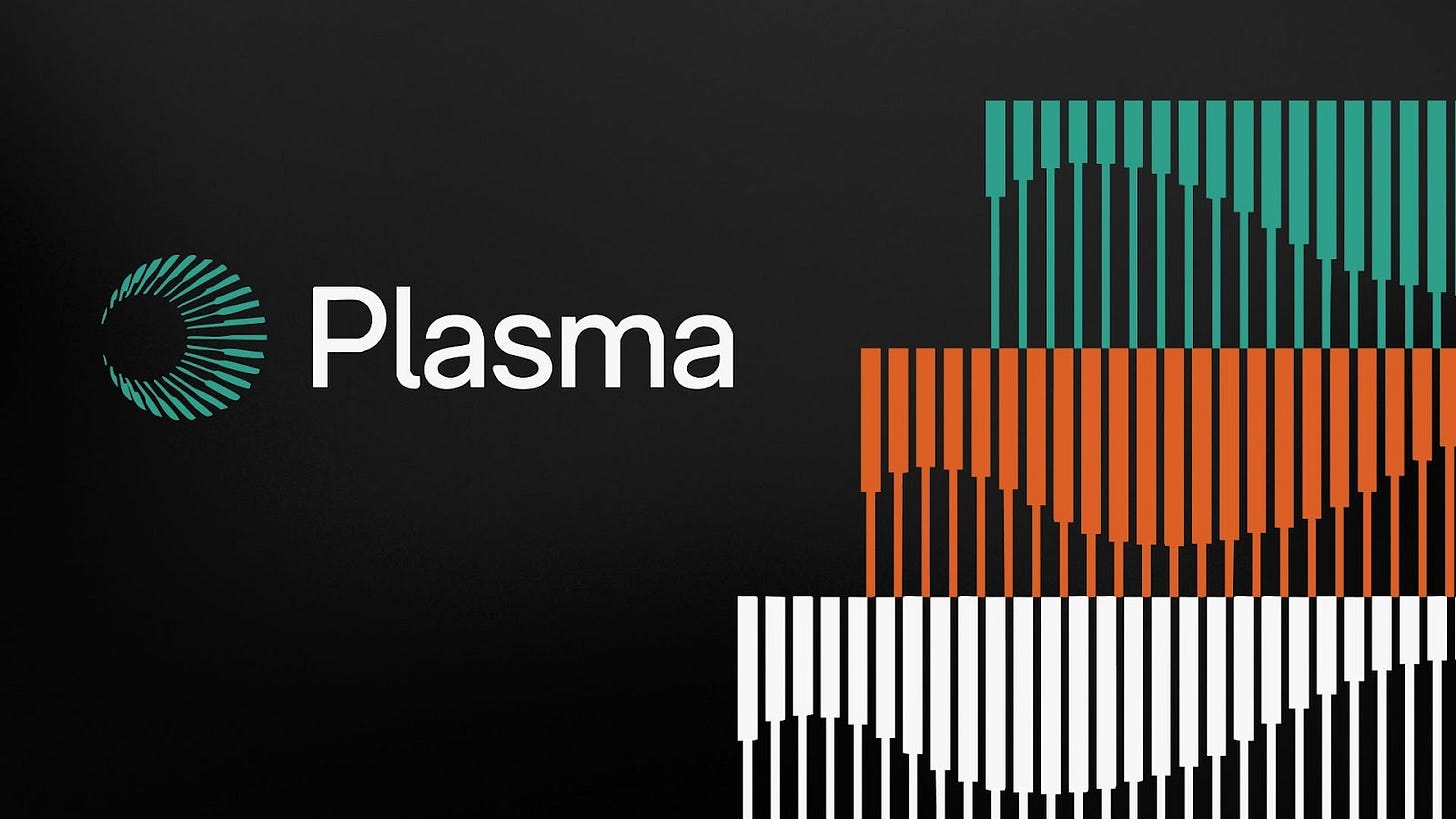Tether is not a stablecoin company
It’s quietly building the monetary operating system of the Internet.
Hey, it’s Marc,
Most people still think of Tether as "just a stablecoin company". They're wrong.
Tether.io just dropped two bombshells:
Tether Power: They’ll 𝗼𝗽𝗲𝗻-𝘀𝗼𝘂𝗿𝗰𝗲 𝘁𝗵𝗲𝗶𝗿 𝗕𝗶𝘁𝗰𝗼𝗶𝗻 𝗠𝗶𝗻𝗶𝗻𝗴 𝗢𝗦 (MOS)
Plasma: Raised $𝟱𝟬𝟬𝗠 𝗶𝗻 𝗺𝗶𝗻𝘂𝘁𝗲𝘀 for a new 𝗕𝗶𝘁𝗰𝗼𝗶𝗻-𝗯𝗮𝘀𝗲𝗱 𝗟𝟭 𝗳𝗼𝗿 𝘀𝘁𝗮𝗯𝗹𝗲𝗰𝗼𝗶𝗻𝘀, backed by Peter Thiel
These aren't separate moves.
To understand what Tether’s doing, look at what they’re trying to control.
1. Mining
Tether has aggressively expanded into Bitcoin mining over the past year. And it wants to become the world's biggest by the end of 2025.
What’s happening: While Bitcoin miners are moving from mining to AI data centres, Tether is going all in with a different strategy.
They've already invested $2B in mining & energy infrastructure.
Tether also holds over 𝟭𝟬𝟬,𝟬𝟬𝟬 𝗕𝗧𝗖.
Mining is a 𝗵𝗲𝗱𝗴𝗲 on that position.
BUT: 75% of Bitcoin’s hashrate is controlled by the U.S.
95% of blocks come from just 6 large mining pools.
That’s not decentralisation.
That’s a chokepoint.
This is why Tether built MOS (Bitcoin Mining Operating System) - a peer-to-peer, plug-and-play mining OS – so 𝗮𝗻𝘆𝗼𝗻𝗲 can mine, from solar-powered farms to industrial sites.
And they’re open-sourcing it.
Why?
This is 𝗻𝗼𝘁 𝗮𝗹𝘁𝗿𝘂𝗶𝘀𝗺.
It’s a hedge on the hedge.
“We invested 2B in energy production, and Bitcoin mining actually is a bit more than that. Something that we have been very shy to say, but I think that it’s very realistic that by the end of the year, Tether will be the biggest Bitcoin miner in the world, even including all the public companies.”
— Paolo Ardoino, CEO of Tether
Stepping back: In 2024, it dropped $500M to build and buy into mining sites across Uruguay, Paraguay, and El Salvador. The goal was to control 1% of global Bitcoin mining power by 2025.
Why it matters: Tether’s deep pockets let it expand when others are broke. It’s not just a stablecoin company anymore — it’s betting big on Bitcoin’s infrastructure.
As deep-pocketed players like Tether and American Bitcoin build out large-scale mining operations, they help dilute the dominance of existing pools.
More players = higher hash rate = stronger network security.
What’s next: MOS will be released as open-source by Q4 2025.
2. Stablecoin Infrastructure
Tether's new layer 1 for stablecoins (Plasma) isn’t trying to be just another L1.
It's anchored to Bitcoin and EVM-compatible.
And it’s aiming to be the settlement layer for digital dollars.
Zooming in: In early 2024, Tether backed Plasma. It is a Bitcoin-based sidechain built specifically for stablecoins. Fully EVM-compatible and optimized for high throughput. It removes everything stablecoins don’t need — no NFTs, no memecoins, no staking. Just fast, zero-fee USDT transfers.
Why it matters: With over $155B in circulation, USDT dominates the stablecoin industry. By anchoring USDT to a purpose-built chain like Plasma, Tether is:
Reducing reliance on congested or expensive chains (like Ethereum).
Improving user experience with instant, feeless transfers.
Expanding Bitcoin’s utility beyond “digital gold” — making it the trust layer for stablecoin transactions.
In short: USDT is the liquidity king. Plasma could be its custom-built empire.
Tether’s other initiatives
Keep reading with a 7-day free trial
Subscribe to 51 Insights to keep reading this post and get 7 days of free access to the full post archives.






